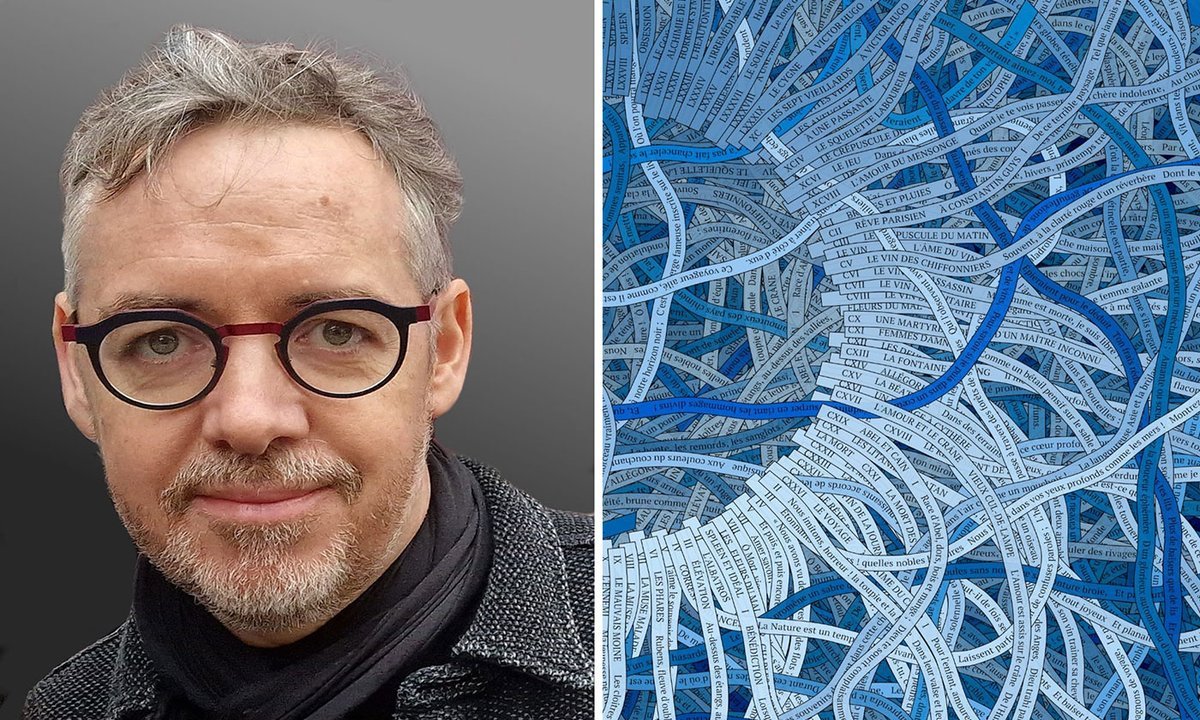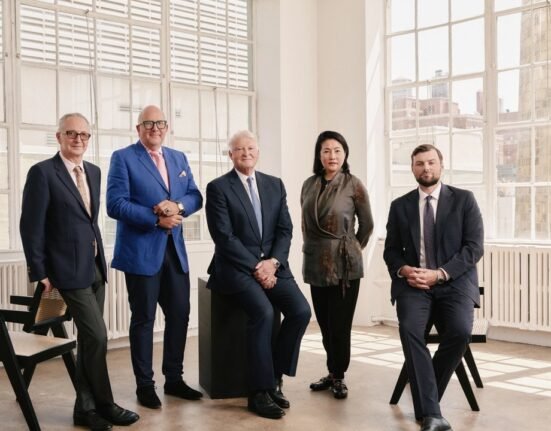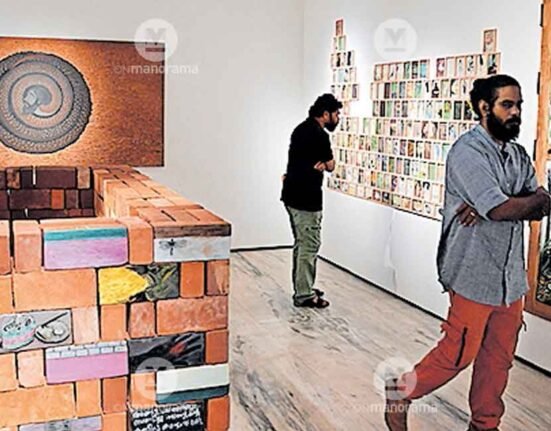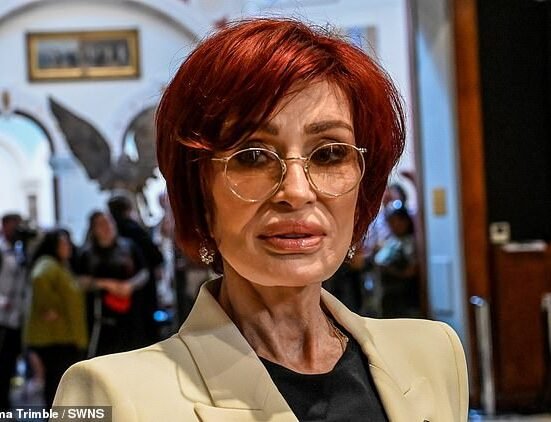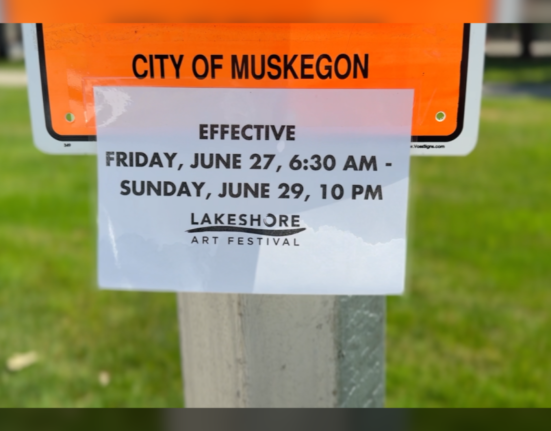The French-born, Geneva-based, artist RVig (full name Richard Vigniel) has won the 2024 ABS Digital Art Prize for his generative art piece Fleurs Du Mal, which is inspired by Charles Beaudalaire’s celebrated 1857 poetry collection of the same name.
The prize, sponsored by Arab Bank Switzerland (ABS) and formerly known as the ABS NFT Art Prize, is focused on digital art created by artists who have worked with non-fungible tokens (NFTs)—the programmable certificates of authenticity that sit on the blockchain, enabling artists both to surface their work to a global audience and sell direct to collectors, via cryptocurrencies such as Ethereum. The prize was awarded on 28 May at the third annual Non-Fungible Conference (NFC), in Lisbon.
Vigniel has been a generative artist, using creative coding to make digital artworks, since 1999 and has worked with NFTs for the past three years. He describes the Fleurs Du Mal video work as “embodying Baudelaire’s 126 poems as ribbons which evolve and flow according to the structure of the poetry”.
He continues: “A visual realm is created where the ribbons intertwine and mingle, mirroring the structure of the text. The result is a dance between the individual poems… with each ribbon moving independently, driven purely by the shape and construct of the words.” The work is offered in multiple formats, something that is characteristic of the NFT space in 2024. They are a looping three-minute video; five 10-minute videos, tokenised (or minted) through five individual NFTs; five high-resolution images in unique editions; a high-resolution image tokenised through NFTs in a limited edition; and a limited-edition high-resolution print.
The decision to re-position award as a “Digital Art Prize” rather than a “NFT Art Prize” is significant to Vigniel and to the judges, who include Rani Jabban, managing director of Arab Bank Switzerland, and four star digital artists. Those artists are Claire Silver, an artificial Intelligence collaborative artist whose catchword is “taste is the new skill”; Dave Krugman, the photographer and founder of the ALLSHIPS creative community; William Mapan, a leading generative artist known for his long-form works; and Marjan Moghaddam, a long-established crypto artist and winner of the 2023 ABS NFT Art Prize.
To Vigniel, Jabban and Krugman, a photographer and the founder of the ALLSHIPS creative community, the name change is important in communicating to the wider art world what NFTs are—a technology that serves to certify, surface and “tokenise” digital art in a way that can bring artist and collectors closer together—while making clear that they are not a form of art in themselves.
The prize’s name change also feels like part of the maturing of a sphere that was dominated by sensational headlines three years ago about the prices that were raised by digital art works: the $69.3m sale of the artist Beeple’s Everyday: The First 5000 Days (2021), which used an NFT, at Christie’s in March 2021; and the artist Pak’s Merge, which saw 28,983 buyers mint NFTs on the Nifty Giftway platform for a combined total of $91.8m in December 2021, among those that made a stir. This often resulted in many of the other areas of digital art worthy of further exploration, such as proof of work, the artistic concept and process, and the new patterns of ownership that NFTS allowed in those ground-changing projects, being overlooked.
“It’s just a technology, in the same way that a computer is technology or a canvas is a form of technology,” Krugman tells The Art Newspaper, referring to the NFT. “In the big 2021 NFT craze or bubble, a lot of the coverage and media of the space got just very sensationalist and I think [NFTs were] misinterpreted in many ways… Non-fungible tokens and blockchain are only the underlying technology. All that does is [surface and certify] digital objects. What artists do with those digital objects is something else entirely. And changing the name [of the prize] to Digital Art is a recognition of that.”
“Each time I hear somebody say NFT art, I say no, it’s not NFT art. It’s not crypto art, Vigniel adds, speaking to The Art Newspaper,” An NFT is a “certificate of authenticity, of ownership, that you can resell or not”. The history of ownership captured in that certificate, in the NFT, he says, is “important for the world of traditional art. Having the trustability of a piece from its origin, from me, from the artist… to this collector and then this one. It’s part of the history of each piece.”
The width and depth of the digital art space
To Jabban, who launched the prize in 2023, the award and its evolution is part of a personal journey in the realm of NFTs. After the headline events of 2021, he judged rising interest in them as no more than a speculative bubble, but changed his mind after meeting John Karp, who founded the Non-Fungible Conference in 2022. Through that meeting, Jabban “discovered the whole width and depth of the space [of digital art that NFTs enable]”. “NFT is just a medium, it’s like an MP3 for music,” Jabban says, “So, we’re talking about the art, and that is what is important. You see Richard Vigniel, who has been 25 years in generative art already. The NFT brought him visibility and a medium that could sell, and reach a wider public than he had before. But it is important, also, to see that these artists were there before.”

Vigniel’s Fleurs du Mal is offered in multiple formats: a looping three-minute video; five 10-minute videos, tokenised (or minted) through five individual NFTs; five high-resolution images in unique editions; a high-resolution image tokenised through NFTs in a limited edition; and a limited-edition high-resolution print Courtesy of the artist
Vigniel cites Art Blocks as one particular platform that has allowed “a new kind of long-form generative art”. The NFT and blockchain technology generally, he says, has—as a trusted source of provenance—allowed artists create “a series of unique pieces, a collection of 100, or 1,000 unique pieces, all different, all generated with the same algorithm”.
Considering the work of Vigniel and the other nine short-listed artists— Leander Herzog; MDD; Ivona Tau; Samantha Cavet and Eva Eller; Louis Paul Caron; Mia Forrest; Roope Rainisto & Irina Angles; Anthony Samaniego; Miss AL Simpson—Krugman is eloquent on how the intervention of artists so often proves the value of a new technology, such as the Web3 world of blockchain and NFTs. “This is what always happens with new technologies,” he says. “What point is there to the technology of pressing vinyl without musicians? It’s just an inert technology. It’s the artists that come through and add context and culture and make these technologies culturally relevant. And so up until 2020, there wasn’t a lot of creative culture around the blockchain space and around the cryptocurrency space. But when artists came and started tokenising artwork, there was an explosion of creativity.” He pays tribute to the Web3 pioneers who “laid this incredible groundwork for us artists to come in and build a cultural layer.“
A test case for a future digital economy
Jabban sees the art world’s engagement with the blockchain, in the form of NFTs, as a test case for a future digital economy. His bank, he says, has been concerned for some years with the custody of digital assets. Some of its clients, traditional art collectors, had followed the bank in buying NFTs. And ABS is looking to institutionalise the space. “It’s only the beginning of it,” he says, referring to other economic cases for the blockchain. “I think it’s around the corner. A lot of things will happen in the next two or three years.” Art, he says, has “battle-tested” the processes of custody of digital assets.
“I just would encourage all artists who might be sceptical or on the fence” about NFTs, Krugman says, “to ignore the headlines about big sales and about all this crazy stuff that happens in any space. But look at the bubbling creativity that’s rising around blockchain and understand that this is the future, this is a new paradigm.”
For Vigniel—who receives a 15,000 CHF (€15,650) prize, and has his winning work included in Arab Bank Switzerland’s Digital Art Collection—the prize is validation for a quarter-century’s work in generative art, and for digital art in general. “Now you see generative art in museums, in MoMA, in LACMA, so it’s coming, perhaps slowly, but we have time. I’ve waited 25 years to be there, so let’s continue and let’s push down the road together.”

